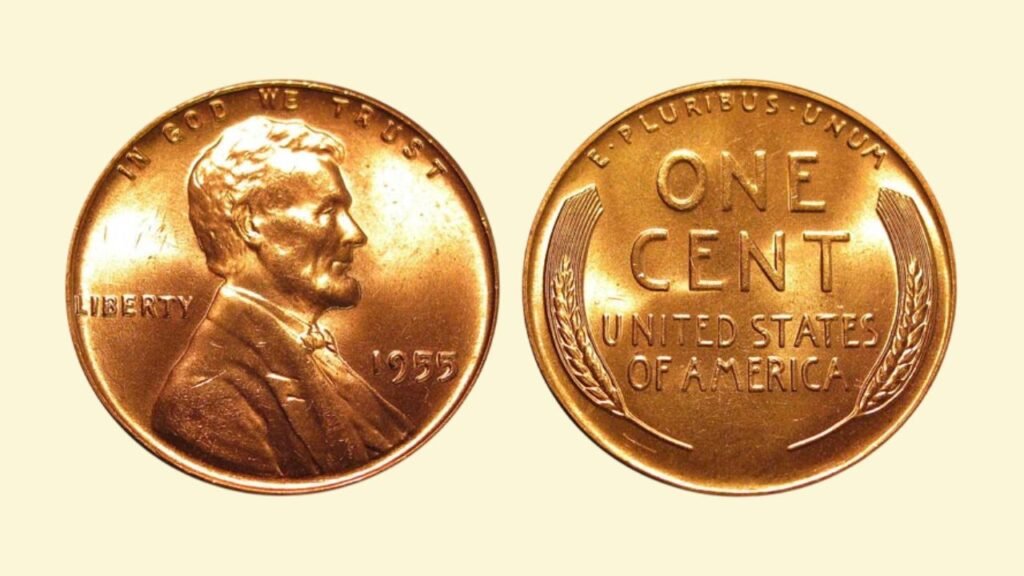Introduction
The 1955 Doubled Die Wheat Penny is evidence that numismatic errors have a conventional enchantment, with creditors falling for the precise characteristics and hefty monetary price. Such a rare minting mistakes has became the average one-cent coin right into a valuable relic worth as a lot as $125,000.
Could one be sitting neglected to your coin jar, pocket alternate, or an old own family series? Here’s the way to find it—and why it’s well worth a lot.
What Is the 1955 Doubled Die Penny?
In 1955, for the duration of a habitual production run on the Philadelphia Mint, a mechanical misalignment brought about some cash to be struck twice however slightly offset, developing a dramatic and seen “doubling” effect at the coin’s face. This befell when a working die was improperly manufactured with a misaligned hub, generating a small but unforgettable batch of doubled coins.
These pennies were accidentally released into circulation—mostly through cigarette vending machines—before the Mint caught the mistake.

Why Is It Worth So Much?
Scarcity + Visibility = Value
- Only an estimated 20,000–24,000 coins were released before the error was discovered.
- The 1955 Doubled Die is particularly valuable because the doubling is extremely noticeable to the naked eye, unlike many other subtle mint errors.
- High-grade examples (especially in uncirculated condition) have sold for up to $125,000 at auction.
- Even circulated examples can fetch between $1,000 and $15,000, depending on condition.
How to Spot a Genuine 1955 Doubled Die Penny
The hallmark of this coin is the bold, unmistakable doubling on the obverse (front):
Key Features:
- Date “1955” appears doubled—look for a strong shadow-like effect.
- “LIBERTY” shows clear, crisp doubling of each letter.
- “IN GOD WE TRUST” is also doubled, especially noticeable on the word “TRUST.”
- The reverse (wheat stalks and denomination) is not doubled, which helps confirm authenticity.
- Made of 95% copper, weighing about 3.11 grams.
Tip: Don’t confuse this with poor-quality counterfeits or “machine doubling,” which looks flatter and less dramatic.
Valuation and Market Trends
The value of a 1955 Doubled Die Wheat Penny varies depending on its condition and color designation:
- Brown (BN): Coins having heavy circulation and exposure, resulting in a brown patina.
- Red-Brown (RB): Coins displaying a combination of original red luster and brown toning.
- Red (RD): Coins with original red copper sheen, showing minimal exposure and higher value.

The following is a table of summary of the estimated values by condition and color designation:
| Grade | Brown (BN) | Red-Brown (RB) | Red (RD) |
|---|---|---|---|
| MS-60 | $1,500 | $2,000 | $3,000 |
| MS-63 | $4,000 | $5,500 | $7,500 |
| MS-65 | $12,000 | $15,000 | $24,000 |
| MS-66 | $20,000 | $30,000 | $50,000 |
| MS-67 | $50,000 | $75,000 | $125,000 |
Identifying Real 1955 Doubled Die Pennies
Because of their scarcity and worth, 1955 Doubled Die Pennies are frequently counterfeited. To verify authenticity:
- Professional Grading: Get grading from established professional grading services like PCGS or NGC.
- Diagnostic Features: Inspect for vertical die scratches going downwards from the left bar of the “T” in “CENT” on the reverse side, a recognized indicator of authenticity.
- Steer clear of “Poor Man’s Doubled Die”: This is a misnomer used to describe coins with slight die wear doubling, without the great value of an actual doubled die
Historical Significance and Collectability
The 1955 Doubled Die Penny has a mythical reputation among numismatists. Its unintentional production and short distribution have given it a focus point for collectors, representing the fascination of minting mistakes and the narratives they convey.
Conclusion
The 1955 Doubled Die Wheat Penny is one of those rare numismatic legends that truly lives up to the hype. Its dramatic doubling, limited mintage, and jaw-dropping value make it a dream find for collectors and casual treasure hunters alike. And yes — it’s still out there, waiting to be discovered. Check your pennies. That tiny copper coin could be your ticket to a six-figure payday!
FAQ’s
What reasons a doubled die error?
A doubled die blunders happens during the die advent procedure while the die gets a couple of misaligned impressions from the hub, ensuing in doubled design elements at the struck coins.
What is the “Poor Man’s Doubled Die”?
The “Poor Man’s Doubled Die” refers to 1955 pennies with minor die deterioration doubling, specially at the closing digit of the date. These are common and preserve minimal cost as compared to the real doubled die errors.
How can I confirm if my 1955 penny is a real doubled die?
Authentic 1955 Doubled Die Pennies show off clear doubling on the obverse inscriptions and date. For affirmation, consult a professional grading provider or numismatic professional.
